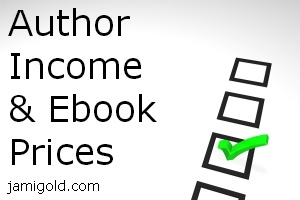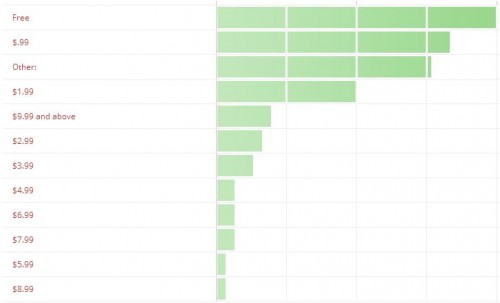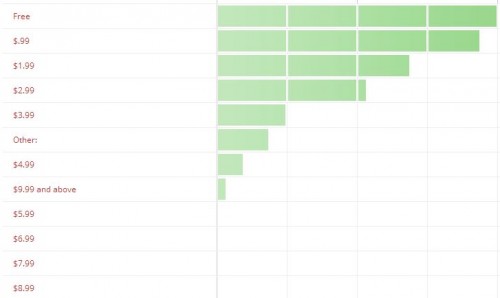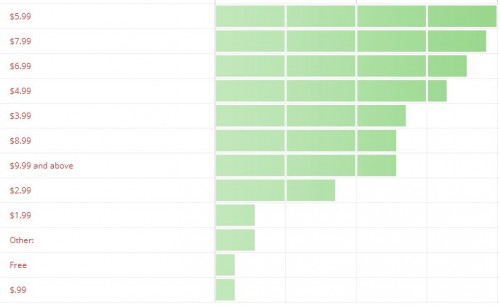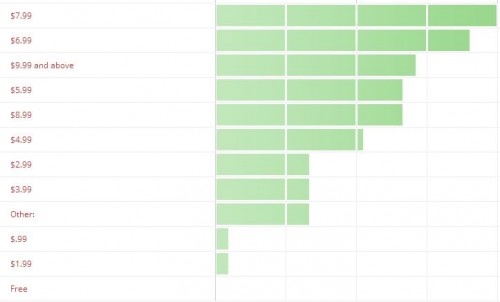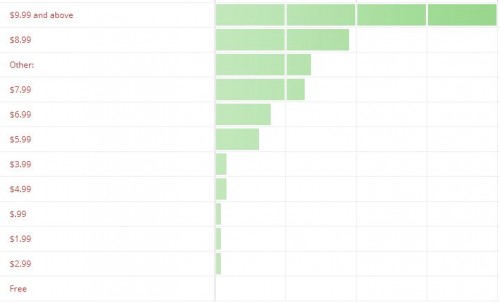The publishing world has been abuzz with the results of the 2014 Digital Book World (DBW) and Writer’s Digest Author Survey. Headlines scream “Most authors make less than $1000 a year.” Numbers taken out of context claim that 80% of the 9000+ respondents earn $1000 or less.
Eh. Yes and no.
Yes, the DBW/Writer’s Digest survey polled 9,210 or so writers. However, don’t let that big number impress you so much that you assume this survey data is uber-accurate. More than 65% of those respondents are “aspiring” and haven’t published anything yet.
The DBW/Writer’s Digest Survey Results
According to The Guardian, the remaining respondents broke down to “18% self-published, 8% traditionally-published and 6% saying they were pursuing hybrid careers.” Okay, so that leaves around 3000 respondents who have been published in some way, shape, or form.
But wait, a full 20% of both the self-published and the traditionally published respondents said they’ve made $0. Ditto with 5% of the hybrid authors. And yes, that means literally zero dollars, as the next income band goes from $1 to $999.
I find that result odd. Does that mean zero income from book sales? Or zero income after expenses?
I don’t know, but it does make me suspect the question wording and/or the respondent base was a bit hinky. Maybe those authors are planning on self-publishing, or maybe they have a traditionally published book that hasn’t been released yet. Or maybe the DBW/Writer’s Digest respondent base doesn’t reflect professional published authors.
Many have criticized the survey because it was run by Writer’s Digest, who’s been known to recommend vanity publishers to those interested in self-publishing. If the respondents were from the vanity publishing arena, then yes, I could see their income being zero (or negative).
Brenda Hiatt’s Survey Results
Anyone who has studied the industry knows that one book alone isn’t going to cut it. Professional authors, those that treat their writing as a career, focus on building a backlist. If we have 3-6 books out, it doesn’t take much income from each to break $1000.
A look at Brenda Hiatt’s amazing site “Show Me the Money” lists the advance, royalty rates, and earn out for various romance and YA traditional publishers. The vast majority of earn out amounts on her site are over $1000, so even if an author publishes only one book a year, they’d still beat that DBW figure. And Brenda’s gathered data from almost 2700 traditionally published titles.
Now, that’s not to say her respondents are rolling in the dough. The average advance or earn out probably works out to around $10K, with some as low as $200.
My point is that I don’t quite trust DBW’s results. But I’m not going to pay nearly $300 for the full report to analyze how the heck they came up with their numbers. The results strike me as “link bait” in their attempt to sell copies of their report.
Beverley Kendall’s Survey Results
We all know some self-published books are crap. I’ve seen them. I’ve talked to their authors. And they plain don’t care. They’re in it for the quick buck, or they believe they’re geniuses who don’t need editing.
That’s why I was far more interested in the results of Beverley Kendall’s survey of self-published/hybrid authors. Some self-publishers obtain professional-level editing and covers, and that group should be more comparable to traditionally published authors. Beverley asked the questions that really matter rather than lumping all self-published authors together.
She analyzed results from her 822 self-published respondents, and 65% of her respondents had no previous traditional or epublishing deals to improve their name recognition. Keep that in mind for these results. (And I highly recommend checking out her 29 page, free report of her analysis at the link above. Fantastic information!)
How Off-Base Is the DBW Survey?
First thing I note (page 4), 48.05% earned over $10,000 in 2013. Even with no traditional publishing name recognition, 46.04% of self-published-only authors earned over $10K. Hmm, that’s quite different from the 5% for self-published-only authors earning those numbers in the DBW report.
The second thing I note (page 10) is that backlist really matters. While 80% of respondents with 1-3 books for sale make $10K or less, that figure drops quickly with additional books. About 50% of respondents make more than $10K when they have 4-7 self-published books available, and 20% make more than $50K. At 12-20 books available, over 50% of respondents are making 50K or more, and 30% are over $100K.
How Much Does Professionalism Matter?
Now let’s look at those numbers for professional, self-published authors—that is, those who use a professional editor and cover artist (page 13). Of those who didn’t use a professional editor (Beverley’s definition: “with a publishing background”), 40.23% earned more than $10K. In contrast, of those who did use a professional editor, 50.82% earned more than $10K.
Similarly, of those who didn’t use a professional cover artist (her definition: “graphic artist or professional designer”), 39.21% earned more than 10K. In contrast, of those who did use a professional cover artist, 52.55% earned more than $10K.
In short, professionalism matters. And the percentage differences between professional editing and professional cover design aren’t much, so they both seem to be important. However, a professional cover has a slight edge over editing if you’re dealing with limited funds.
Is Beverley Kendall’s Survey the Anomaly?
Brenda Hiatt’s “Show Me the Money” page surveys self-published authors too. For 2012, her respondents averaged 10 titles each (that backlist mentioned above) and averaged $137K. The median, which discounts outliers better, was still $51K.
Those figures match Beverley’s 2013 results for authors with similarly large backlists. So I think it’s safe to say that for those authors who approach self-publishing as a career (build a backlist, use professional editors and cover artists, and other things I’ll probably go into in another post), making more than $1K a year is the norm.
Jami Gold’s Ebook Reading Habits Survey Results
A couple of weeks ago, I ran my own survey poll questions about ebook prices and our reading habits. I knew from my own Kindle that I have far more books in my to-be-read pile than I have time to read, so I wondered if ebook prices affected whether we’d actually get around to reading a book.
Note: I received 666 responses. (Yes, really. *dodges lightning bolt*) Click on the images to see full size. Also, if you’re reading from my newsletter, click through to the post to view all the images.
At This Price, I Won’t Try Them because They’re Crap
We’ve heard some rumblings that books priced free or $.99 might give the impression of crap, so that was my first question. As expected, free came out on top, followed by $.99 and $1.99 in the top 4 answers.
But what I found interesting was that the third place answer was “Other,” and many of those “Other” answers emphasized that they judge by sample chapters not by price, etc. So while expectations are lower for cheaper books, that price doesn’t necessarily condemn them to a won’t-try-them ghetto.
At This Price, I’ll Buy Them But Won’t Be in a Hurry to Read
However, in this question, we see that readers won’t usually be in a hurry to read anything free or $.99. Even $1.99 and $2.99 don’t trigger the “I have to read this now to make sure I don’t waste that money by letting it get buried in my Kindle” attitude.
What’s equally interesting are the zero responses for $5.99-$8.99. At that price, any readers who pay that amount are bound and determined to prevent the book from being buried.
At This Price, I’ll Read Them and Have Higher Expectations
Here, we see that books between $4.99-$7.99 have high expectations and are still priced for readers to buy. $2.99 and $3.99 sit in a middle position, where some readers have higher expectations and some don’t. The $8.99 and $9.99 results reflect that ebooks at that price are too expensive to buy unless we already know and love the author.
At This Price, I’ll Buy Them because I Know I Love Them
Here, we see that if we know we love an author, we’re willing to pay between $4.99 to $9.99 and above. I was surprised by the highest results at the $6.99 and $7.99 prices, but if my choice for a beloved author was that price for an ebook or an over-$10 print book, I might go for the ebook version as well. *smile*
At This Price, I Won’t Buy an Ebook because It’s Too Expensive
No surprise that “$9.99 and above” far surpassed the other answers, yet at the same time, in the “Other” comments, about 12% of the respondents said they’d be willing to pay about $15 (or more) for an ebook. Before celebrating that 12%, note that about 15% of the respondents said anything $5.99 or over would be too expensive.
I think that confirms what many authors have suspected: $2.99-$4.99 is the “sweet spot” for ebook pricing. Those prices don’t trigger readers’ “too expensive for an ebook” attitude, and about 40% or more of readers would have high enough expectations to actually read them.
In addition, Beverley Kendall’s survey shows that for those authors making $25K or more a year, virtually all of their top-earning books are in that same $2.99-$4.99 sweet spot (page 14). In fact, the only authors that have their best-earning book at $.99 or $1.99 are those making $10K or less a year.
Which direction does that causation flow? Is it a quality-yet-underpriced book leading to low earnings? Or is it a low-earning author not having enough quality to charge more for their books? I don’t know, but it’s interesting food for thought. *smile*
Had you heard about all these surveys? Did you take part in any of them, and if so, which ones? What do you think about the DBW vs. the Beverly Kendall/Brenda Hiatt results? Do you have thoughts for why their results would be so different? Do you have any questions or comments about my Ebook Reading Habits Survey?

